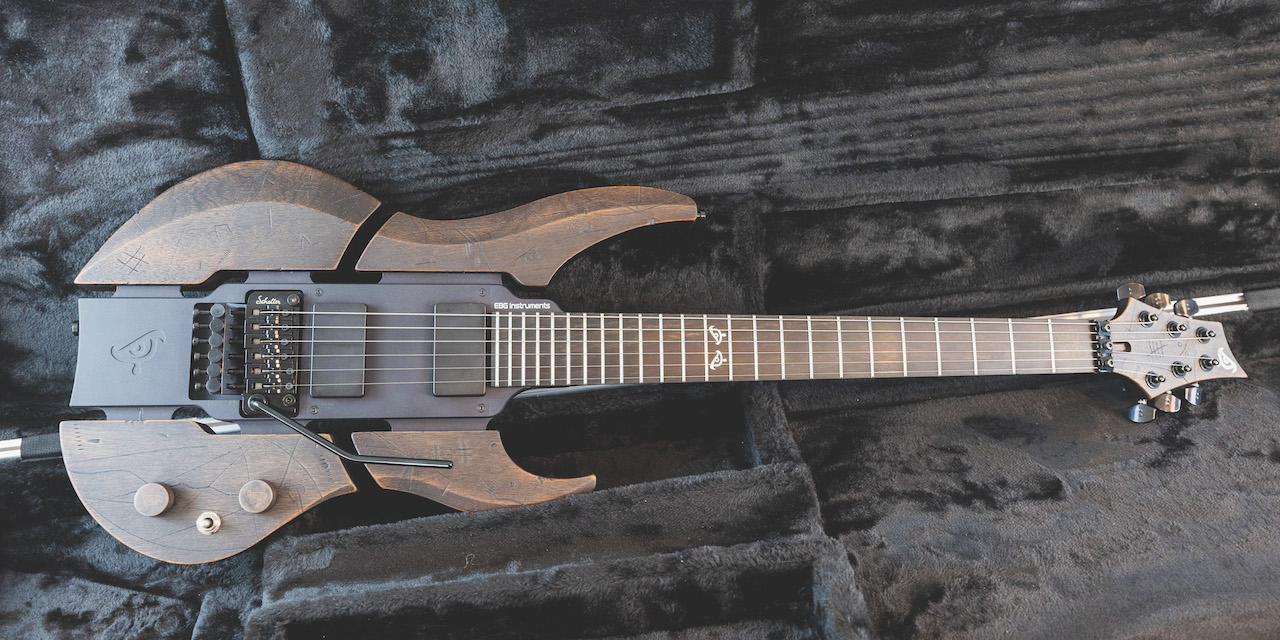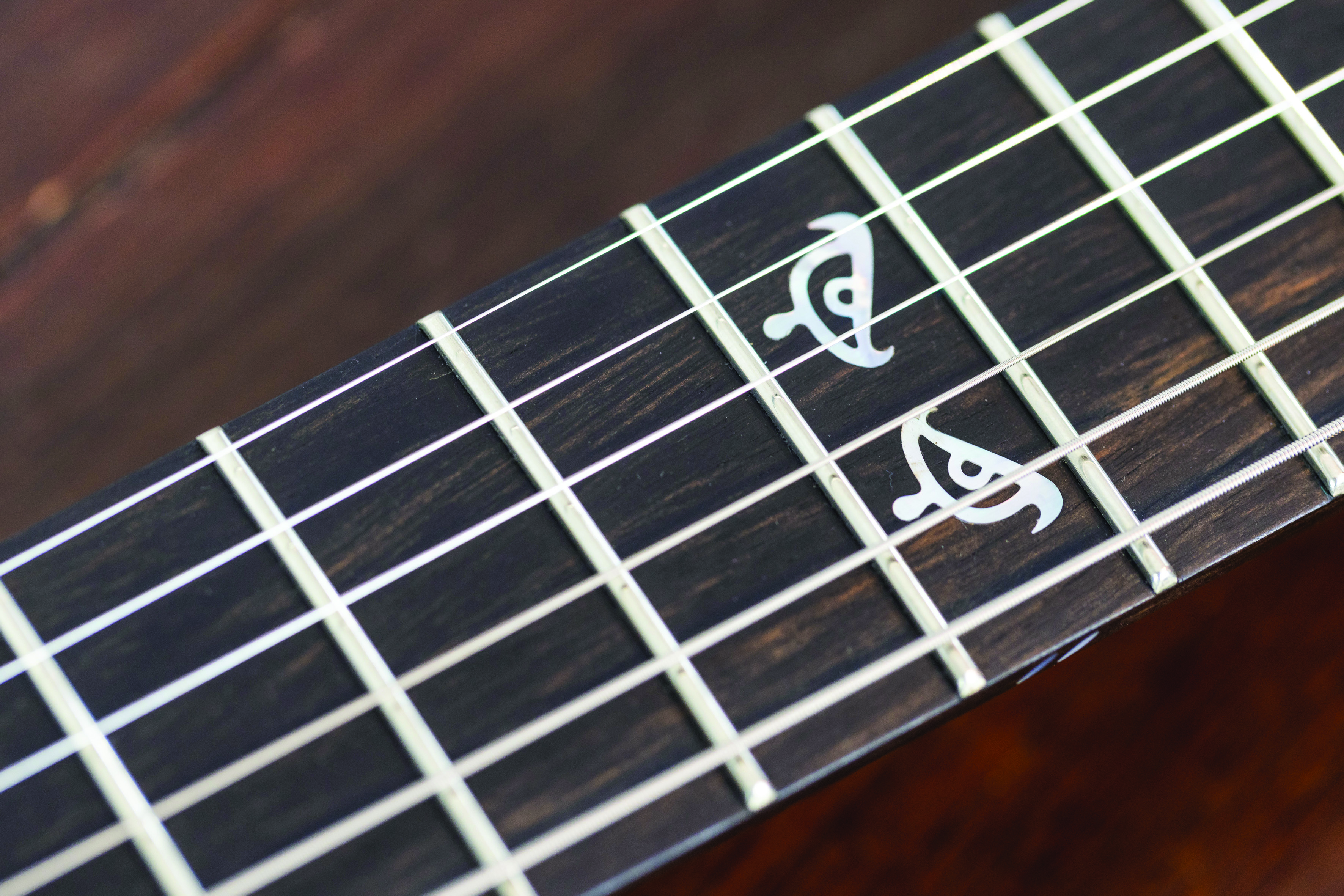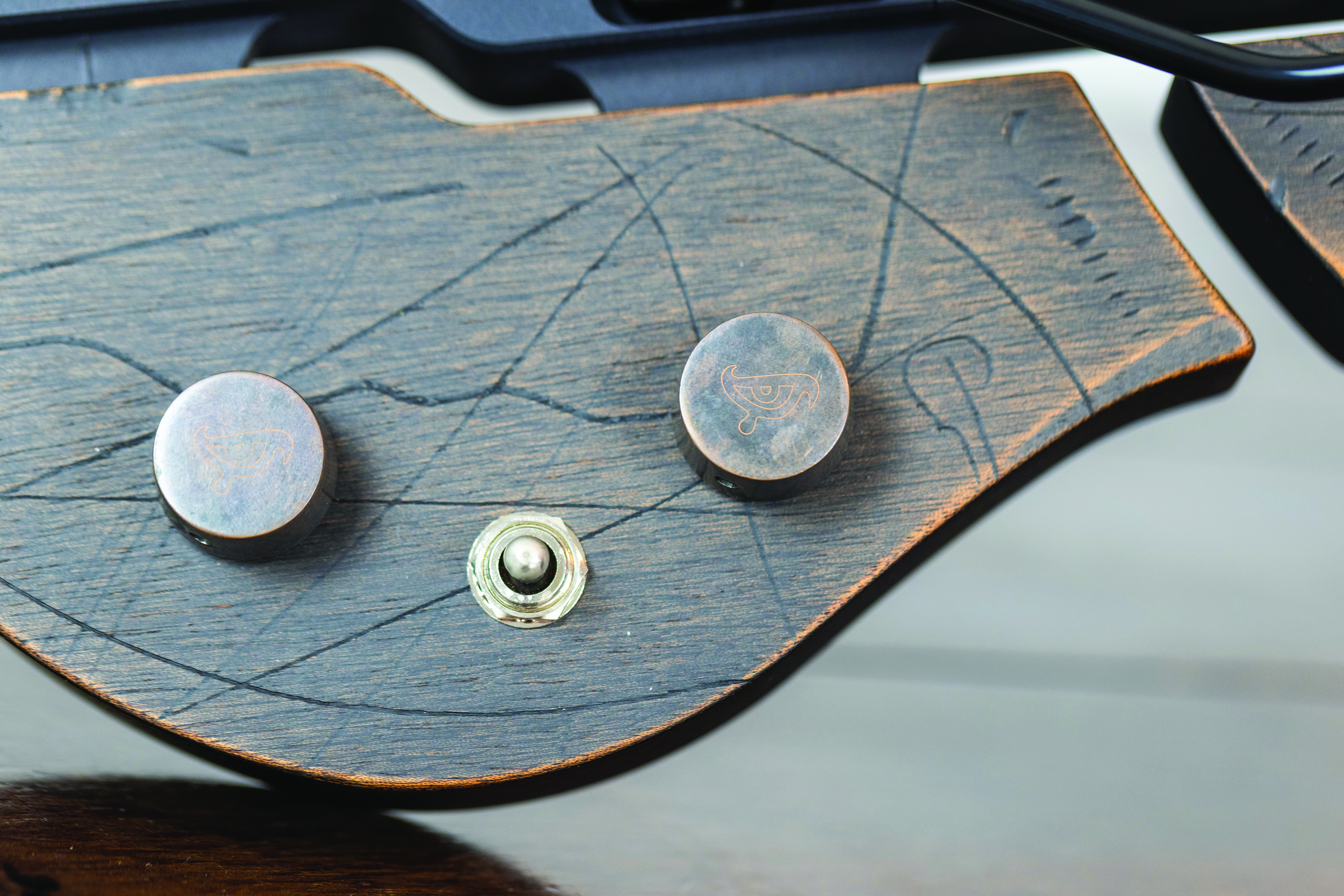“As unusual as this model first presents, it becomes just another guitar once you’ve spent a little time with it, although a distinctive and characterful one”: The EBG-6 Jigsaw Crook is a post-modern masterpiece with tones as distinctive as its looks
This unique build is a very expressive and willing creative tool, and an inspiring guitar by any measure

Guitarists can be a notoriously conservative bunch when it comes to the instruments they choose to play. But when you push the envelope far enough, it eventually breaks through to an entirely new standard that many innovative musicians can’t help but appreciate.
Modern German guitar makers like Nik Huber, Frank Hartung, Deimel and Teuffel have exported their blend of craftsmanship and Vorsprung durch Technik to the acclaim of American players. Now, EBG-Instruments, of Dusslingen, Germany, is applying its own post-modern twist to the movement to make its eclectic rock machines something strikingly different.
The EBG-6 Jigsaw Crook we’re exploring here marries tradition and innovation in several obvious ways, while applying elevated build techniques that aren’t fully apparent at first glance.
EBG-Instruments is the creation of Marc Locher, a trained and certified master mechanical engineer and technician, who still undertakes every step of the build process himself. Look more closely at the company’s striking “perched bird” logo – especially when it appears in a mirror-image pair at the Jigsaw Crook’s 12th-fret inlay – and a clue to the company’s full name is revealed: Eye’s Bass Guitars, or EBG.
It doesn’t take a particularly close look, though, to catch the dramatic departure
of this guitar’s construction, found in the segmented wood “jigsaw” body sections and milled aluminum core.
The guitar is appointed much as we’d expect a 21st-century rock warrior to be, with a double-locking Floyd-style vibrato unit made by Schaller, two humbuckers with satin-black covers and a 24-fret, slim profile neck. But the Jigsaw Crook is actually an EBG model intended for a broader stylistic reach, and Locher has put a lot of thought into making it as versatile an instrument as possible.

“The challenge for the middle part involved a few points,” Locher says of the striking aluminum core. “It should increase the sustain and have a fast attack, have a slim and ergonomic transition to the neck at the back, be designed so that you don’t have to touch cold aluminum while playing, and enable space for the individual components, such as pickups and electronics.
All the latest guitar news, interviews, lessons, reviews, deals and more, direct to your inbox!
“It should be CNC-milled from solid aluminum, not cast aluminum, which dampens vibration. It should not be too heavy or produce diffuse secondary oscillations, and the connection screws to the body parts should only be visible from the rear and should be solid and stable. In addition, it should, of course, look harmonious and fit the overall style of the instrument.”
For all the objectives, Locher tells GP this design came together smoothly. “I had always worked with modern materials in mechanical engineering,” he says, “and I was convinced that this hybrid design should work. And in fact, it works great.

“After the first prototypes, I noticed that the aluminum center block actually increases sustain and attack. In the meantime, I have optimized and improved the wall thicknesses and some small details.
“It always bothered me when a neck or body was made entirely of aluminum, as aluminum always feels cold. I avoided this by using tonewood body parts, and I continue to use tonewood or carbon for the necks. This means I retain the usual playing feel of a classic electric guitar with the positive properties of aluminum.”
EBG calls the tonewood for both the body parts and neck mahogany sapeli, which is more commonly known as sapele in English-speaking guitar circles. It would be easy to assume that the body pieces are cosmetic, but Locher declares otherwise.
“The tonewood body parts and neck still play a significant role in the guitar’s sound,” he tells us. “Without the body parts, my instruments would sound colder and higher pitched. They would also have less sustain, since the body elements, with their rigid connection to the center block, have a lot of vibrating mass.
“The type of wood used for the neck has the same properties as other guitars. Mahogany sounds a little warmer and more balanced, and maple, for example, is a little faster and more harmonically oriented. So the choice of wood is also very important in my construction.”

The neck is topped with an unbound fingerboard of African ebony with distinctive mother-of-pearl oval side dots, 24 medium-jumbo frets and a 12-inch radius, all laid out to a rather unusual 25 ¼–inch scale length. Although the fully covered pickups might outwardly appear to be active units, they’re a passive, PAF-inspired set from German winder Harry Häussel, whose work I’ve enjoyed on several of Nik Huber’s guitars.
The Vin-B in the bridge position and Vin+ in the neck read 12.32k-ohms and 6.79k-ohms, respectively. “For this model, I chose a humbucker pairing that has a powerful but not too great output,” Locher says. “These humbuckers can be used very flexibly, from crunch to rock to harder sounds, and do not go in any extreme direction. Both humbuckers generate enough pressure and heat, and the neck pickup still remains clear and present.”
As unusual as the Jigsaw Crook first presents, it feels comfortable and familiar
in the hands, and playability is superb throughout the range. In short, despite the modernity, it becomes just another guitar once you’ve spent a little time with it, although a distinctive and characterful one.
The “jigsaw” part of the name needs no explaining; the “crook” comes from the various marks Locher has scratched into the aged-look body sections and headstock.
“These are secret symbols that robbers use to mark certain items or houses,” Locher explains. “I think the Crook would certainly be worth stealing, but if you want to act in accordance with the law, you can always order one from me.”

My playing tests included a Plexi-like Friedman Small Box head and 2x12 cab,
a Vox-ish 65amps London head and 1x12 cab, and a Fractal FM9 modeler. Into a high-gain amp or preset, the Jigsaw Crook rocks like a rebel, but I was probably most surprised by how even-tempered, graceful, and versatile it was over a wider than expected range of genres.
The guitar’s core voice is thick, yet articulate, and I have rarely played a guitar that sounds so clear and biting without being shrill or harsh. Put another way, there’s a boatload of humbucker-generated grind and girth here, yet it never turns to mud. Even the neck pickup presents a crystalline presence and swirling harmonic saturation into heavy overdrive, an impressive trick by any measure.

The hotter bridge pickup delivers significant midrange grunt and more overall punch, yet chimes nicely into a clean amp, especially with the guitar’s volume control turned down a tick or two. Shown a little distortion, it delivers aggressive, gutsy grind and an appealing classic-rock voice that slays myriad lead chores.
Overall, it’s a modern sound, certainly, and you could even describe it as having a metallic element to its character, yet in use I found that a great positive, not something that pigeonholes a guitar that really shouldn’t be restricted to such preconceptions.
Fold in its boatloads of sustain and well-balanced frequency response, and the EBG-6 Jigsaw Crook proves a very expressive and willing creative tool, and an inspiring guitar by any measure.
For more info, see the official EBG website.
PRICE $4,600 (plus shipping)
Dave Hunter is a writer and consulting editor for Guitar Player magazine. His prolific output as author includes Fender 75 Years, The Guitar Amp Handbook, The British Amp Invasion, Ultimate Star Guitars, Guitar Effects Pedals, The Guitar Pickup Handbook, The Fender Telecaster and several other titles. Hunter is a former editor of The Guitar Magazine (UK), and a contributor to Vintage Guitar, Premier Guitar, The Connoisseur and other publications. A contributing essayist to the United States Library of Congress National Recording Preservation Board’s Permanent Archive, he lives in Kittery, ME, with his wife and their two children and fronts the bands A Different Engine and The Stereo Field.

